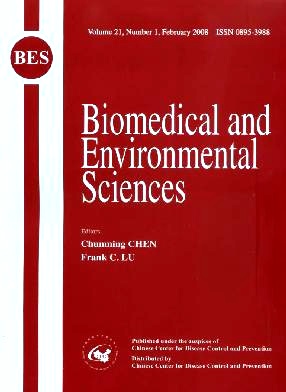Screening of Antioxidant Potential of Selected Barks of Indian Medicinal Plants by Multiple in vitro Assays LI
-
Key words:
- Superoxide dismutase /
- Lipid peroxidation /
- Nitric oxide quenching /
- Medicinal plant extracts /
- Reactive oxygen species /
- Antioxidants
Abstract: Objective To evaluate the antioxidant potential in herbal extract barks of five therapeutically important medicinal plants native to India,i.e.Crataeva nurvala Buch.-Ham.,Buchanania lanzan Spreng.,Aegle marmelos Corr.,Dalbergia sissoo Roxb.ex DC.,and Cedrela toona Roxb.Methods Standardized aqueous alcoholic extracts from the selected barks having different target radicals,such as superoxide radical,nitric oxide,ABTS radical,and peroxidative decomposition of phosphohpids.were prepared and screened bv multiple in vitro assays.These extracts were also tested for total phenolic and tannin content and correlated with antioxidant capacity. Results Tbtal phenolic and tannin contents were found to be the highest in C. nurvala (195 GAE mg/g and 218.3 mg/g CE).SOD mimetic activity was found to be the highest in Crataeva nurvula,although all barks showed activity more than 100 units/mg extract.Lipid peroxidation inhibitory potential was found to be the highest in Crataeva nurvala(83.4% inhibition of MDA formation/10 μg extract),and also showed a comparatively high NO quenching capacity (45.5% per 10 μg extract).The highest NO quenching potential was found in Aegle marmelos(47.3% per 10 μg extract).Cedrela toona showed the lowest LPO inhibitory potential and NO quenching capacity(50.5% and 30.5%,respectively).Buchanania lanzan,a medicinal plant extensively used for inflammatory disorders and Dalbergia sissoo also showed 72.5% and 69.1% LPO inhibitory potential/10 μg extract.Trolox equivalent antioxidant capacity ranged from 0.24 to 0.39 mmol/L TEAC/mg extract,indicating that all the barks tested had ABTS+ radical quenching capacity.Conclusion Bark of Crataeva nurvulahas the highest antioxidant capacity and a positive correlation between antioxidant activity and their plendic content was found.
| Citation: | ARCHANA KUMARI, POONAM KAKKAR. Screening of Antioxidant Potential of Selected Barks of Indian Medicinal Plants by Multiple in vitro Assays LI[J]. Biomedical and Environmental Sciences, 2008, 21(1): 24-29. |







 Quick Links
Quick Links
 DownLoad:
DownLoad: